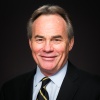In Brief... U.S. Population Statistics Show Looming Issues
"United States in Throes of Rapid Change" headlined an Agence France Presse article published November 1, 2000. Statistics recently released by the U.S. Census Bureau are indicators of issues that will confront the U.S. government and citizenry in the next few decade....
The report showed that 26.4 million of the 275 million people in the U.S. population, nearly 1 in every 10, was born outside of the United State.... Famous for its "melting pot" attitude, the U.S. has championed its historic ability to assimilate people from diverse cultural and political backgrounds into the fabric of its representative republic. That's not necessarily the case any longer.
Consider the language issue. Increasingly controversial measures to legislate or to deny bilingual education resound in states with large Hispanic population.... Some 6.5 million people speak little English, while 17.3 million speak Spanish exclusively. The recent U.S. presidential election campaign demonstrably illustrated the need to reach out to and include the sizable block of Hispanic voter....
Immigration during the years of nation building for the U.S. was chiefly from white nations of Europe and other Anglo-Saxon people.... However, a fundamental shift is underway that portends political and cultural changes in years to come. Within the next 50 years, African-Americans, Hispanics and Asian-Americans will outnumber white.... Presently, 71 percent of the population are white.
In the world's wealthiest nation, poverty is still an issue. Over 2 million have been lifted out of "statistical poverty," defined as an income of $17,000 or less for a family of four, between 1998 and 1999. Nonetheless, people living in poverty still account for 11.8 percent of the population, or 32.3 million people. The debate rages on over how to address the attendant needs, including providing health care to the 10 million children not currently covered.
Some believe that the strong economy will eventually eliminate poverty and that the country needs only to continue on its current path. A more realistic view holds that the economic growth is tenuous and likely to cycle downward. Should the basic needs of the poor be met by government welfare programs or by programs that help the poor to obtain the education and job skills that will enable them to earn their way out of poverty? Or, is a combination of these methods required? The debate will undoubtedly continue.
Finally, a burgeoning senior citizen population promises persisting disputes over Social Security, Medicare, Medicaid and programs to ensure reasonably priced prescription drug.... Those aged 65 and older currently make up 12.7 percent of the population, or 34.4 million people. The Census Bureau forecasts that the figure will double in the next 30 years!


